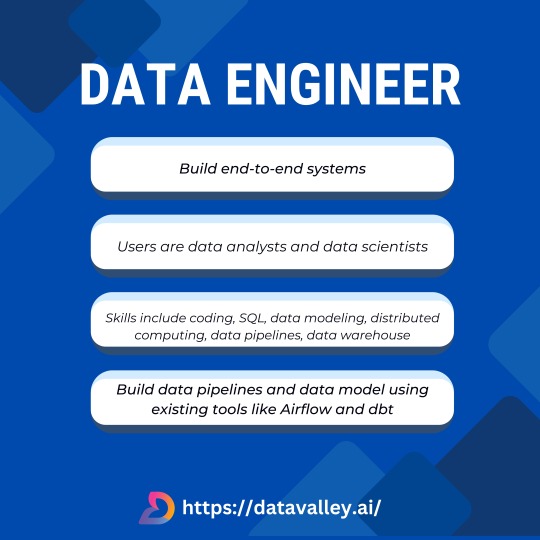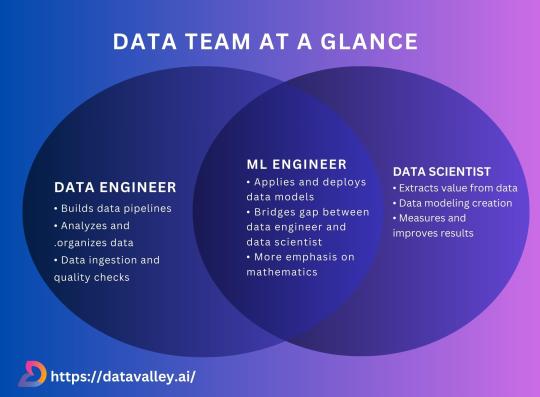#DataDrivenCulture
Explore tagged Tumblr posts
Text
Bridging the Gap Between Data Complexity and Usability for Businesses
Do you use your data to its full potential, or are you being held back by complexity? Nowadays, in a hyper-competitive market, companies are generating and gathering data at an exponential pace. Although this data is a goldmine of information, it is complicated and brings about barriers, many of these organizations are finding it difficult to translate their raw data into actionable strategies. Closing the gap between data complexity and usability is the first step to bringing the transformative growth to light.
Understanding the Data Complexity Dilemma
Modern businesses manage data from diverse sources—customer interactions, IoT devices, financial systems, and more. This heterogeneous combination of well articulated and ill defined data, can be paralyzing, with integration and analysis a challenging problem. If there is no appropriate tool, deep, valuable information stagnates and decisions fail.
Why Data Usability Matters
Usability is the bridge between data and decision-making. It guarantees data is presented in a way that is easily understood, actionable, and applicable to business goals. Decisions are made with speed and efficiency thanks to easy access to insights (visual dashboards, predictive analytics, easy-to-use interfaces) on the business side.
Vupico SDP: Simplifying Data for Better Decisions
Vupico's Smart Data Platform (SDP) is specifically designed to come to grips with the difficulties of data complexity. With a focus on usability, the platform helps businesses:
Centralize and Streamline: To combine data from multiple sources in a single, readily accessible platform.
Democratize Insights: Give teams the means to analyze and act upon data easily.
Increase Efficiency: Automate tedious procedures, creating the fastest path from the data to the decision.
A Call to Action for Leaders
The question is not if your business has enough data, it's not if you've mined data from it. Suspects are equipped with the right tools to handle complexity and turn it into something actionable.
Discover more about the way Vupico SDP can change your approach to data at www.vupico.com.
Resources:
The Usability Factor in Data Analytics
Overcoming the Challenges of Complex Data Systems
How Leading Businesses Build Data-Driven Cultures
© 2024 Vupico SDP. All rights reserved.
#DataComplexity#DataUsability#BusinessGrowth#DataDriven#SmartDataPlatform#DataIntegration#BusinessDecisions#PredictiveAnalytics#UsableInsights#EfficiencyInBusiness#DataAutomation#VupicoSDP#DataVisualization#DataDrivenCulture#BusinessStrategy#ActionableData#DataManagement
0 notes
Text

VADY: Turning Data Dreams into Reality
Imagine a world where data works seamlessly for you—VADY makes that a reality. Our AI-powered analytics platform transforms raw information into intelligent business strategies, helping organizations make data-driven decisions with precision. From operational efficiency to customer insights, we ensure that every data point is a stepping stone toward success. Stop dreaming about better business intelligence—start achieving it with VADY.
#VADY#Newfangled#DataTransformation#AIForSuccess#TechInnovation#BusinessInsights#DigitalRevolution#SmartAnalytics#DataVision#BusinessAutomation#BigDataSolutions#NextGenBusiness#DataDrivenCulture#MachineLearningAnalytics#AIRevolution#TechForGood#EnterpriseData#SmartBusinessGrowth#AIEnhancedDecisions
0 notes
Text
Unlock the potential of AI by fostering a data-driven culture in your organization. Discover the 10 essential steps to navigate the AI era successfully.
0 notes
Text
The Trust Equation: How Self-Service Data Management Builds Trust and Enables Better Decisions
In today's data-driven world, valuable insights often get trapped in isolated silos, hindering informed decision-making. What if there was a way to empower everyone in your organization, regardless of technical background, to leverage the power of data?
Introducing the concept of Self-Service Data Management (SSDM) - the key to unlocking a new era of data-driven decision-making.
SSDM breaks down data barriers, placing the reins in the hands of business users.
Imagine:
Marketing teams crafting data-driven campaigns with real-time customer insights.
Sales reps identifying high-potential leads without relying on IT.
Everyone making data-driven decisions to improve efficiency and agility.
This blog explores the transformative potential of SSDM, including:
The Power of Access: Why Data Democratization is Essential
Strategies for Successful SSDM Implementation
A Glimpse into the Future: The Rise of the Citizen Data Scientist and the Era of Intelligent Automation
Empowering a data-driven culture unlocks a wealth of benefits:
Faster, more agile decision-making
A culture of data ownership and accountability
Enhanced innovation and problem-solving
Improved customer satisfaction and profitability
Don't wait! Read the blog to discover how SSDM can transform your organization.
#datawarehouse #datadrivenculture #analyzedata #datasources #datadrivendecisions #datagovernance #datavisualizations #dataliteracy #dataaccess
1 note
·
View note
Text
youtube
4 Reasons to Use People Data to Impact Company Culture
Are you using the right assessment tools in your organization?
Here is a quick recap of the 4 reasons to use assessment data tools in your organization.
Watch the full video - https://youtu.be/9M6U44VlIsY?si=QJfTRE5eA0VsTK88
For more information visit https://audaciousconceptsinc.com and subscribe to our Youtube channel https://youtube.com/@aliciacouri
#CompanyCulture
#CompanyCultureImpact
#AssessmentTools
#PeopleData
#OrganizationAssessment
#CultureImprovement
#DataDrivenCulture
#EmployeeEngagement
#AudaciousConfidence
#AudaciousLeadership
#AliciaCouri
#AudaciousConceptsInc
#RedCarpetCEO
#Influence
#Educate
#Inspire
#Entertain
0 notes
Text

A data engineer is a professional who designs, develops, and maintains the infrastructure and systems necessary for handling large volumes of data. They specialize in constructing data pipelines, optimizing data workflows, and ensuring data quality and reliability. With expertise in programming, data modeling, and database management, data engineers play a crucial role in enabling effective data analysis and decision-making within organizations.
More Information Visit :-https://datavalley.ai/.../aws-data-engineering-masters.../
#DataTeam#DataExperts#DataAnalytics#DataDrivenDecisions#DataInsights#DataTransformers#DataMasters#DataVisualization#AnalyticsTeam#DataIntelligence#DataSolutions#DataInnovation#DataStrategy#DataLeadership#DataDrivenCulture#DataProfessionals#DataEnthusiasts#DataSkills#DataInfluencers#DataExcellence
2 notes
·
View notes
Link
The cloud is a means, not an end to the transformation. While large organizations successfully implement or adopt a cloud-first strategy for new systems, many struggle to extract the full value of moving the bulk of their enterprise systems to the cloud. This is because they tend to move IT systems to the cloud instead of chalking the transformational strategy needed to realize the full potential of the cloud. Just moving legacy applications to the cloud using a lift-and-shift procedure will make IT architectures complex, cumbersome and costlier instead of yielding the benefits that cloud infrastructure and systems are meant to provide.
Cloud adoption for digital transformation
The cloud acts as a force multiplier. Its actual value is best realized when you make it a part of a larger strategy to pursue digital transformation. Such a strategy is enabled by the standardization and automation of the IT environment, adopting a modern security posture, working with an automated agile operating model and leveraging new capabilities to drive innovative business solutions. Organizations that view cloud capabilities in this way can create a next-generation IT capable of enabling business growth and innovation.
Cloud adoption challenges
In an increasingly digitalized environment, whether a business requires utilizing cloud services is no longer the question. The considerations are more around which type of cloud services are required and how to execute a successful cloud migration. With the movement towards a multi or hybrid cloud environment using public cloud platforms, the typical challenges that you might face include:
Under-utilization of cloud capacity
Unclear cloud migration paths or loose adoption frameworks
Cloud security concerns
Absence of talent with the right cloud skills
Dearth of reliable cloud partners with an understanding of business processes, traditional IT and the nuances of cloud
Inappropriate pricing and licensing issues causing cost overruns
Based on the current scenarios, let’s understand what steps are essential to consider when it comes to cloud adoption for your organization.
Cloud discovery and migration
Understanding what would constitute a perfect cloud environment for your business is critical to cloud adoption. Discovering the cloud value and cloud migration paths is essential to create a sustainable cloud-based transformation. The parameters to achieve a successful migration need to be defined:
Establishing the right cloud architecture
Determining areas of your existing architecture that should be migrated or phased out
Building transition roadmaps that ensure adoption
Providing clear ROI and TCO parameters
A stronger go-to-market strategy
Cloud native development
Custom application development, monitoring and scaling in line with your unique PaaS, IaaS or SaaS needs is the way to go when it comes to cloud adoption. Determining optimal data strategies for your organization and content distribution processes is mandatory too. You should have feasible and cost-efficient solutions for your mobile, IoT, Ecommerce or machine learning depending on your priorities.
Connecting business goals to the cloud architecture
Creating effective enterprise cloud architecture requires collaboration with the business and operations teams for you to understand feasibility, usage and scale. You must first define business goals and together with a cloud reference model, figure out what traditional components from the current application architecture can be migrated to the cloud. As part of most cloud architectures, you’ll need to keep a robust security posture and leverage containerized solutions for adding value to your cloud adoption.
Extracting superior outcomes with cloud and DevOps
Using DevOps with cloud services allows you to follow a CI-CD model for pipeline automation when it comes to application, database or cloud services in general. A strong cloud presence with a DevOps culture means that your entire delivery pipeline is more responsive to change. DevOps integration targets feature development, automation testing, quality testing, product delivery and maintenance releases in order to improve reliability and security and provide faster development and deployment cycles. You can expect the following business outcomes with this combination:
Improved deployment frequency
Faster time to market
Lower failure rate of new releases
Shortened lead time between fixes
Faster mean time to recovery
Minimal or zero downtime
The cloud-DevOps combination makes your delivery pipeline agile, flexible and secure enough to adapt to changing trends and consumer preferences.
The way to the right cloud for you
You needed just one cloud vendor in the old cloud days. Today you need an all-encompassing multi-cloud strategy across multiple public clouds or a hybrid cloud strategy across your on-premise data centers and the public cloud.
Managing IT resources, ranging from servers and storage to complex applications, requires considerable time, effort and expertise. Successful companies are focusing on their core business and not managing data centers or their applications. With a fully managed cloud service, businesses can use the power of cloud computing, ranging from basic compute and storage to complex technologies such as AI and ML.
Serverless computing for hassle-free service
Build and run applications without thinking about provisioning, maintaining, and administering the servers. Serverless helps reduces the complexity for building a modern scalable application, while enabling a high level of independent services with no servers to manage and a pay-per-use pricing model. You no longer need to worry about ensuring application fault tolerance and availability. This allows you to focus on product innovation while enjoying faster time-to-market.
At Systems Plus, we believe that with cloud computing, organizations get to have it all: scalability, agility, flexibility and efficiency besides saving on costs and time. Adopting the cloud is far more complex than simply using someone else’s datacenter. Cloud adoption requires organizations to fundamentally shift their model and behaviors to a consumption model rather than a Capex model.
We have the proven skills, expertise and certification to help your organization successfully and strategically adopt the cloud. With experience in all layers of the platform: infrastructure, application, data, security, policy and pipeline, we navigate the people, processes and tools that script success for you. As your strategic partner and a one-stop provider, we help your organization get cloud-fit by guiding you to discover the right cloud adoption strategy and ensure full-service cloud adoption. Giving you our best to help you make the most. And stay ahead of the competition!
#bigdata#bigdatausecases#businessintelligence#dataanalytics#datasecurity#datagovernance#datastorytelling#datawarehousing#datadriven#datadrivenculture#embeddedanalytics#datatrends#data#leader
0 notes
Photo

It is time we opt for more than just data. Check out this blog Data Driven vs Data Inspired vs Data Informed to know the different types of data engineering and choose the one that's best for you.
0 notes
Text

DATA TEAM AT A GLANCE "data team is a dynamic group of experts dedicated to extracting insights from complex data. With a diverse skill set encompassing data engineering, analytics, and visualization, we tackle data challenges head-on. Leveraging advanced tools and technologies, we transform raw data into actionable intelligence, empowering informed decision-making and driving organizational growth. "
More information visit :-https://datavalley.ai/category/data-engineering/
#DataTeam#DataExperts#DataAnalytics#DataDrivenDecisions#DataInsights#DataTransformers#DataMasters#DataVisualization#AnalyticsTeam#DataIntelligence#DataSolutions#DataInnovation#DataStrategy#DataLeadership#DataDrivenCulture#DataProfessionals#DataEnthusiasts#DataSkills#DataInfluencers#DataExcellence
2 notes
·
View notes
Photo

Data-driven decision making lets you scientifically approach your business operations. Integrating this in your workplace could be quite a challenge. check out this blog to understand how to create a #DataDrivenCulture in your organization.
Take a look at it here: https://bit.ly/3rGsy4d
#DataEngineeringSolutions #DataAnalyticsServices #DataAnalyticsConsultingFirm
0 notes